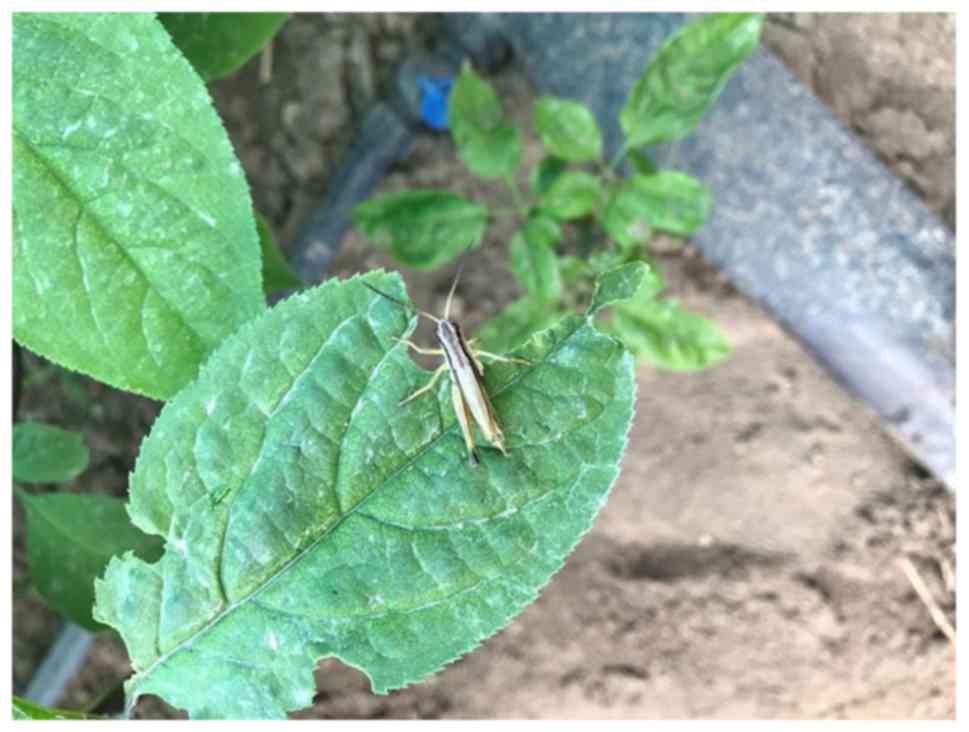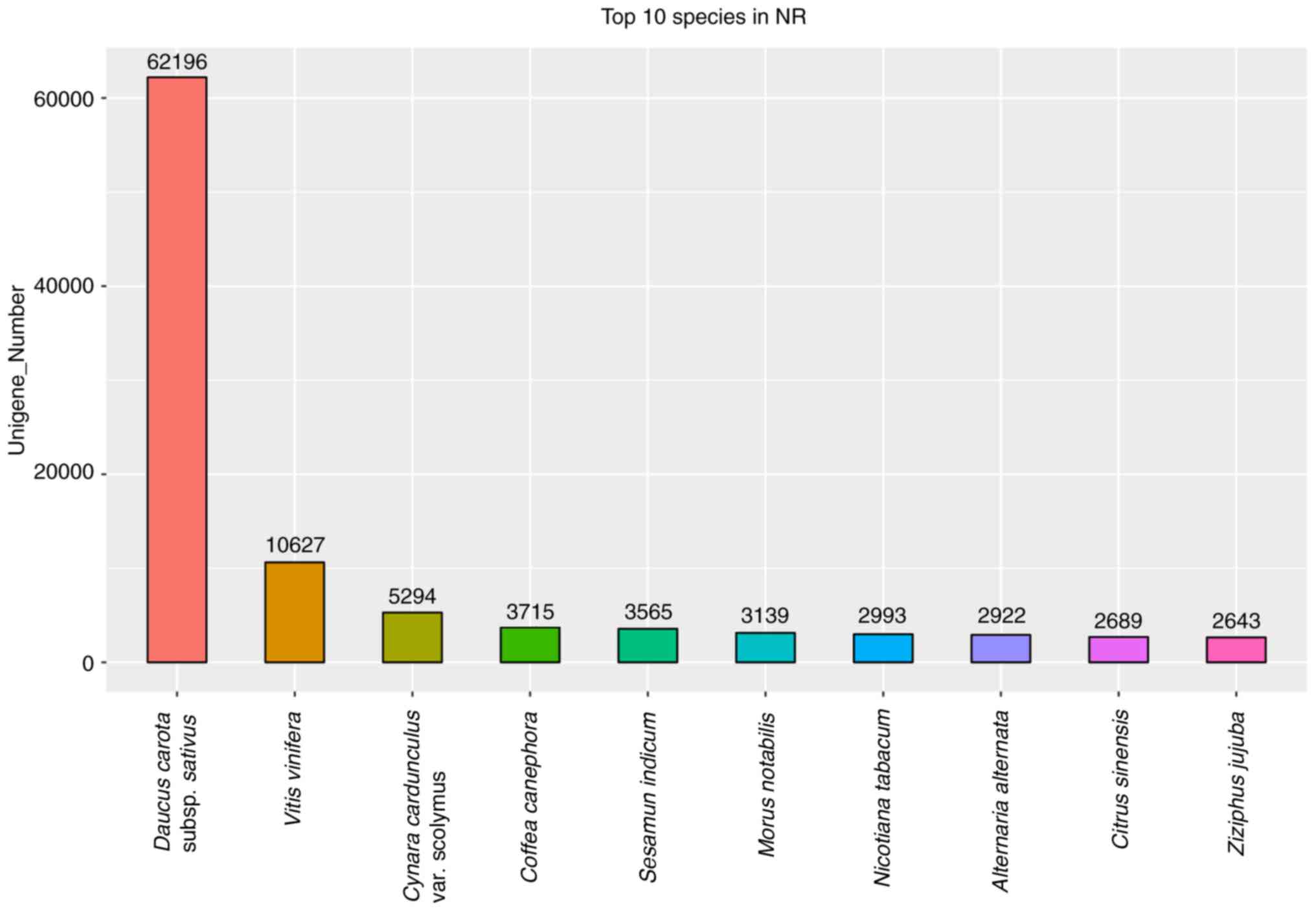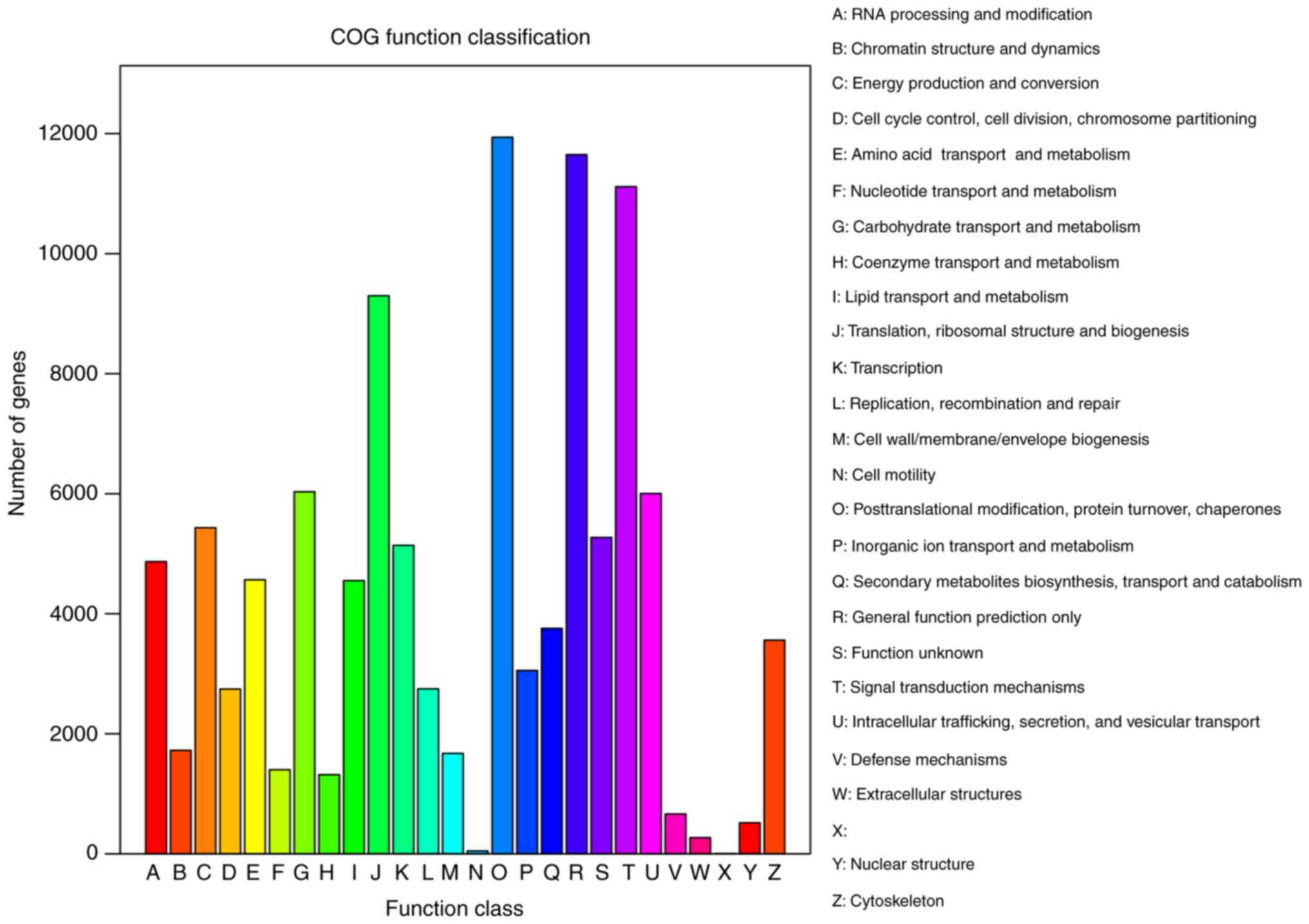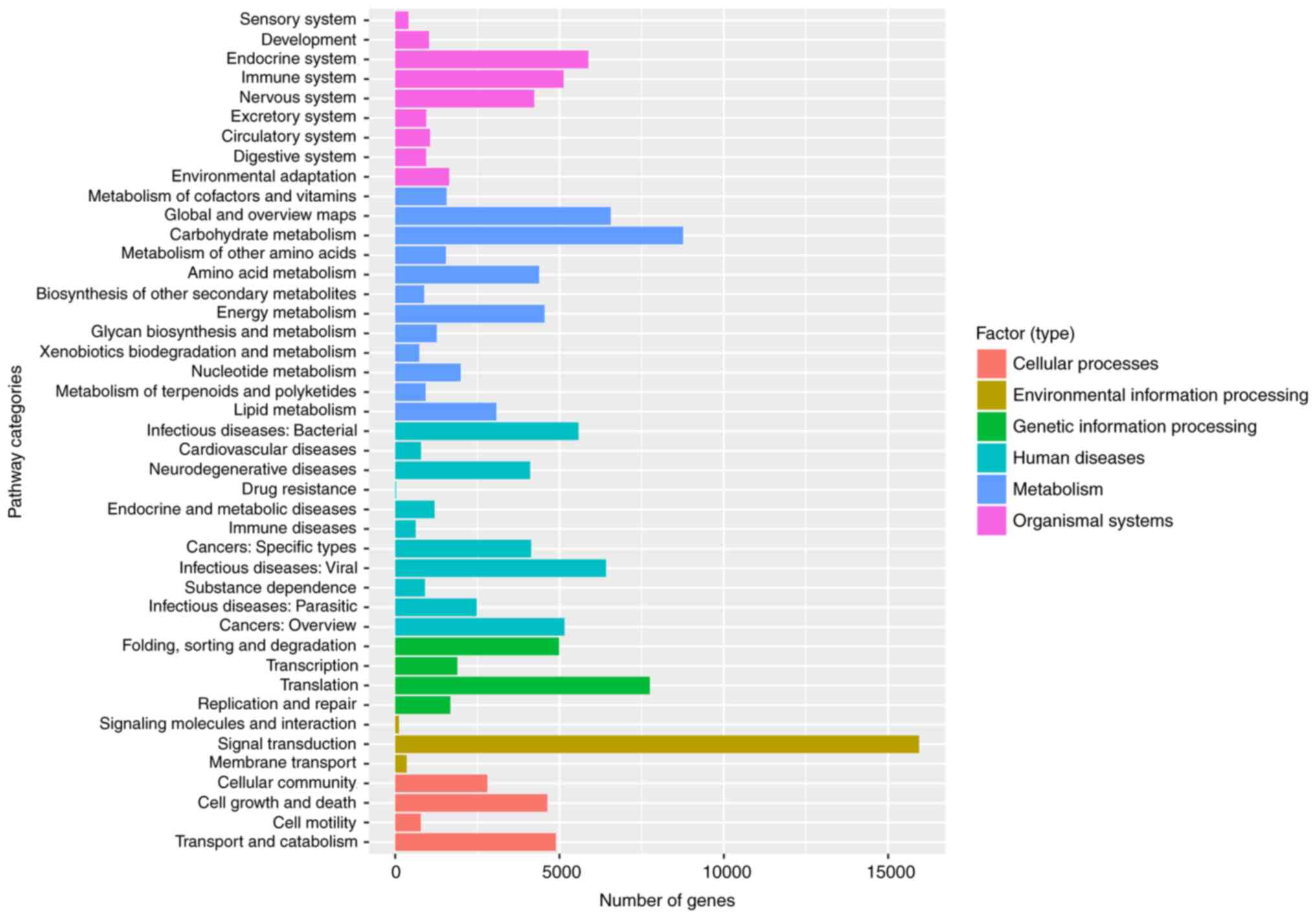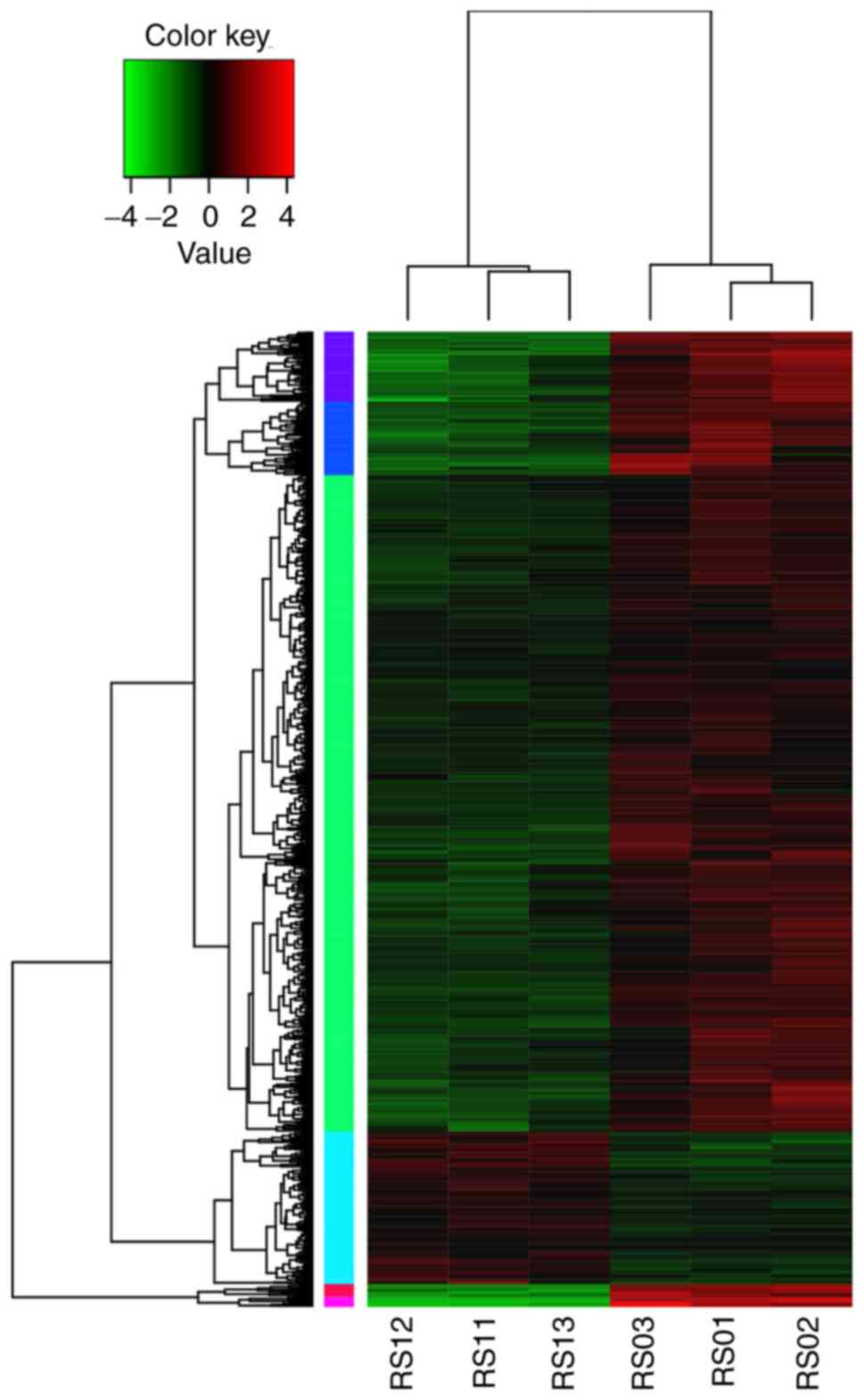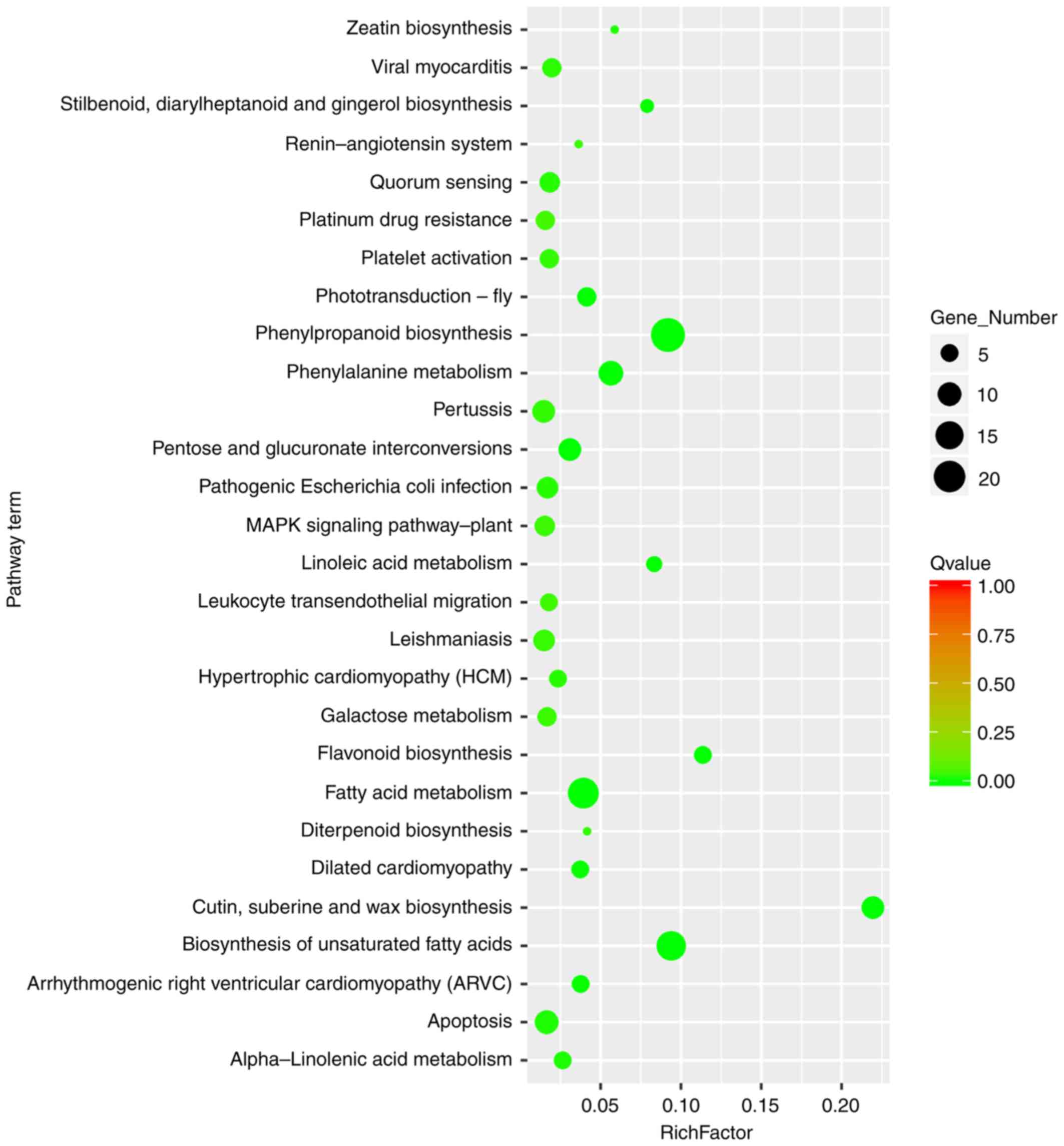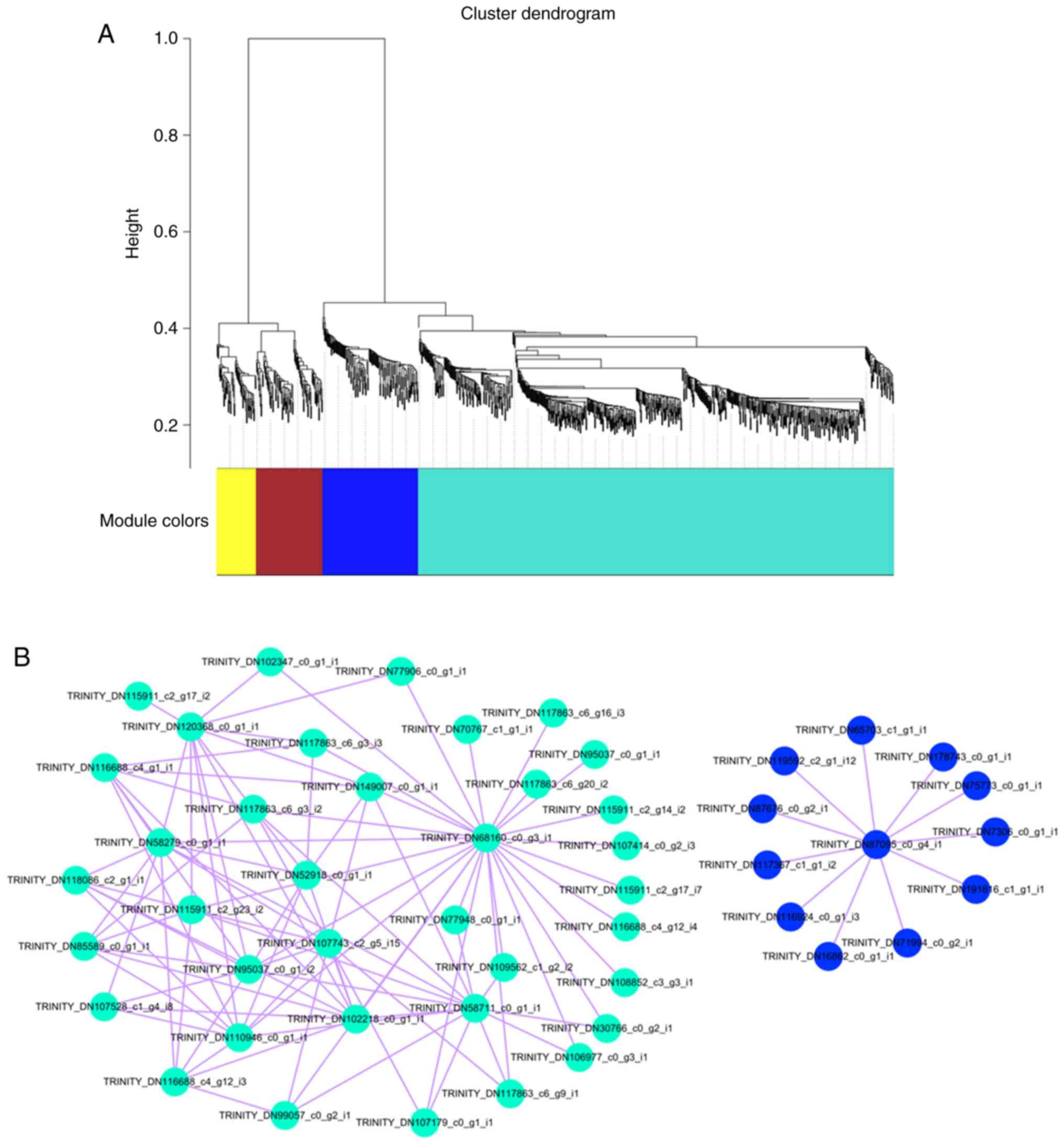|
1
|
Nam KY, Kim YS, Shon MY and Park JD:
Recent advances in studies on chemical constituents and biological
activities of Korean black ginseng (Panax ginseng C. A.
Meyer). Korean J Pharmacognosy. 46:173–188. 2015.
|
|
2
|
Bao L, Cai X, Wang J, Zhang Y, Sun B and
Li Y: Anti-fatigue effects of small molecule oligopeptides isolated
from Panax ginseng. A. Meyer in mice. Nutrients. 8:E8072016.
View Article : Google Scholar : PubMed/NCBI
|
|
3
|
Jiao L, Zhang X, Li B, Liu Z, Wang M and
Liu S: Anti-tumor and immunomodulatory activities of
oligosaccharides isolated from Panax ginseng C.A. Meyer. Int
J Biol Macromol. 65:229–233. 2014. View Article : Google Scholar : PubMed/NCBI
|
|
4
|
Jiao L, Li B, Wang M, Liu Z, Zhang X and
Liu S: Antioxidant activities of the oligosaccharides from the
roots, flowers and leaves of Panax ginseng C.A. Meyer.
Carbohydr Polym. 106:293–298. 2014. View Article : Google Scholar : PubMed/NCBI
|
|
5
|
Shishtar E, Jovanovski E, Jenkins A and
Vuksan V: Effects of Korean white ginseng (Panax Ginseng
C.A. Meyer) on vascular and glycemic health in type 2 diabetes:
Results of a randomized, double blind, placebo-controlled,
multiple-crossover, acute dose escalation trial. Clin Nutr Res.
3:89–97. 2014. View Article : Google Scholar : PubMed/NCBI
|
|
6
|
Lee SG, Lee YJ, Jang MH, Kwon TR and Nam
JO: Panax ginseng leaf extracts exert anti-obesity effects
in high-fat diet-induced obese rats. Nutrients. 9:9992017.
View Article : Google Scholar :
|
|
7
|
Kim HJ, Cheong SS, Kim DW, Suk PJ, Ryu J,
Bea YS and Yoo SJ: Investigation into disease and pest incidence of
Panax ginseng in Jeonbuk Province. Korean J Med Crop Sci.
16:33–38. 2008.
|
|
8
|
Li J, Zhu L, Hull JJ, Liang S, Daniell H,
Jin S and Zhang X: Transcriptome analysis reveals a comprehensive
insect resistance response mechanism in cotton to infestation by
the phloem feeding insect Bemisia tabaci (whitefly). Plant
Biotechnol J. 14:1956–1975. 2016. View Article : Google Scholar : PubMed/NCBI
|
|
9
|
Hill MG, Wurms KV, Davy MW, Gould E, Allan
A, Mauchline NA, Luo Z, Ah Chee A, Stannard K, Storey RD and
Rikkerink EH: Transcriptome analysis of Kiwifruit (Actinidia
chinensis) bark in response to armoured scale insect (Hemiberlesia
lataniae) feeding. PLoS One. 10:e01416642015. View Article : Google Scholar : PubMed/NCBI
|
|
10
|
Martin M: CUTADAPT removes adapter
sequences from high-throughput sequencing reads. Embnet J. 17:2011.
View Article : Google Scholar
|
|
11
|
Grabherr MG, Haas BJ, Yassour M, Levin JZ,
Thompson DA, Amit I, Adiconis X, Fan L, Raychowdhury R, Zeng Q, et
al: Full-length transcriptome assembly from RNA-Seq data without a
reference genome. Nat Biotechnol. 29:644–652. 2011. View Article : Google Scholar : PubMed/NCBI
|
|
12
|
Langmead B and Salzberg SL: Fast
gapped-read alignment with Bowtie 2. Nat Methods. 9:357–359. 2012.
View Article : Google Scholar : PubMed/NCBI
|
|
13
|
Li B and Dewey CN: RSEM: Accurate
transcript quantification from RNA-Seq data with or without a
reference genome. BMC Bioinformatics. 12:3232011. View Article : Google Scholar : PubMed/NCBI
|
|
14
|
Love MI, Huber W and Anders S: Moderated
estimation of fold change and dispersion for RNA-seq data with
DESeq2. Genome Biol. 15:5502014. View Article : Google Scholar : PubMed/NCBI
|
|
15
|
Benjamini Y and Hochberg Y: Controlling
the false discovery rate: A practical and powerful approach to
multiple testing. J R Stat Soc Series. 57:289–300. 1995.
|
|
16
|
Langfelder P and Horvath S: WGCNA: An R
package for weighted gene co-expression network analysis. BMC
Bioinformatics. 9:5592008. View Article : Google Scholar : PubMed/NCBI
|
|
17
|
Kohl M, Wiese S and Warscheid B:
Cytoscape: Software for visualization and analysis of biological
networks. Methods Mol Biol. 696:291–303. 2011. View Article : Google Scholar : PubMed/NCBI
|
|
18
|
Qin Y, Tian Y, Han L and Yang X:
Constitutive expression of a salinity-induced wheat WRKY
transcription factor enhances salinity and ionic stress tolerance
in transgenic Arabidopsis thaliana. Biochem Biophys Res
Commun. 441:476–481. 2013. View Article : Google Scholar : PubMed/NCBI
|
|
19
|
Ren X, Chen Z, Liu Y, Zhang H, Zhang M,
Liu Q, Hong X, Zhu JK and Gong Z: ABO3, a WRKY transcription
factor, mediates plant responses to abscisic acid and drought
tolerance in Arabidopsis. Plant J. 63:417–429. 2010. View Article : Google Scholar : PubMed/NCBI
|
|
20
|
He GH, Xu JY, Wang YX, Liu JM, Li PS, Chen
M, Ma YZ and Xu ZS: Drought-responsive WRKY transcription factor
genesTaWRKY1andTaWRKY33from wheat confer drought and/or heat
resistance in Arabidopsis. BMC Plant Biol. 16:1162016. View Article : Google Scholar : PubMed/NCBI
|
|
21
|
van Verk MC, Pappaioannou D, Neeleman L,
Bol JF and Linthorst HJ: A novel WRKY transcription factor is
required for induction of PR-1a gene expression by salicylic acid
and bacterial elicitors. Plant Physiol. 146:1983–1995. 2008.
View Article : Google Scholar : PubMed/NCBI
|
|
22
|
Park CJ, Shin YC, Lee BJ, Kim KJ, Kim JK
and Paek KH: A hot pepper gene encoding WRKY transcription factor
is induced during hypersensitive response to Tobacco mosaic virus
and Xanthomonas campestris. Planta. 223:168–179. 2006. View Article : Google Scholar : PubMed/NCBI
|
|
23
|
Dang F, Wang Y, She J, Lei Y, Liu Z,
Eulgem T, Lai Y, Lin J, Yu L and Lei D: Overexpression of CaWRKY27,
a subgroup IIe WRKY transcription factor of Capsicum annuum,
positively regulates tobacco resistance to Ralstonia solanacearum
infection. Physiol Plant. 150:397–411. 2014. View Article : Google Scholar : PubMed/NCBI
|
|
24
|
Hu L, Ye M, Li R and Lou Y: OsWRKY53, a
versatile switch in regulating herbivore-induced defense responses
in rice. Plant Signal Behav. 11:e11693572016. View Article : Google Scholar : PubMed/NCBI
|
|
25
|
Huangfu J, Li J, Ran L, Meng Y, Peng K,
Zhang T and Lou Y: The transcription factor OsWRKY45 negatively
modulates the resistance of rice to the brown planthopper
Nilaparvata lugens. Int J Mol Sci. 17:6972016. View Article : Google Scholar :
|
|
26
|
Shi WN, Liu DD, Hao LL, Wu CA, Guo X and
Li H: GhWRKY39, a member of the WRKY transcription factor family in
cotton, has a positive role in disease resistance and salt stress
tolerance. Plant Cell Tissue Organ Culture. 118:17–32. 2014.
View Article : Google Scholar
|
|
27
|
Zhu D, Hou L, Xiao P, Guo Y, Deyholos MK
and Liu X: VvWRKY30, a grape WRKY transcription factor, plays a
positive regulatory role under salinity stress. Plant Sci.
280:2018.doi.org/10.1016/j.plantsci.2018.03.018. PubMed/NCBI
|
|
28
|
Yang L, Ye C, Zhao Y, Cheng X, Wang Y,
Jiang YQ and Yang B: An oilseed rape WRKY-type transcription factor
regulates ROS accumulation and leaf senescence in Nicotiana
benthamiana and Arabidopsis through modulating transcription of
RbohD and RbohF. Planta. 247:1323–1338. 2018. View Article : Google Scholar : PubMed/NCBI
|
|
29
|
Zhang L CJ, Sun X, Zhao T, Li M, Wang Q,
Li S and Xin H: Overexpression of VaWRKY14 increases drought
tolerance in Arabidopsis by modulating the expression of
stress-related genes. Plant Cell Rep. 37:1159–1172. 2018.
View Article : Google Scholar : PubMed/NCBI
|
|
30
|
Li GZ, Wang ZQ, Yokosho K, Ding B, Fan W,
Gong QQ, Li GX, Wu YR, Yang JL, Ma JF and Zheng SJ: Transcription
factor WRKY22 promotes aluminum tolerance via activation of OsFRDL4
expression and enhancement of citrate secretion in rice (Oryza
sativa). New Phytol. 219:149–162. 2018. View Article : Google Scholar : PubMed/NCBI
|
|
31
|
Liang QY, Wu YH, Wang K, Bai ZY, Liu QL,
Pan YZ, Zhang L and Jiang BB: Chrysanthemum WRKY gene DgWRKY5
enhances tolerance to salt stress in transgenic chrysanthemum. Sci
Rep. 7:47992017. View Article : Google Scholar : PubMed/NCBI
|
|
32
|
Mao G, Meng X, Liu Y, Zheng Z, Chen Z and
Zhang S: Phosphorylation of a WRKY transcription factor by two
pathogen-responsive MAPKs drives phytoalexin biosynthesis in
Arabidopsis. Plant Cell. 23:1639–1653. 2011. View Article : Google Scholar : PubMed/NCBI
|
|
33
|
Hu L, Ye M, Li R, Zhang T, Zhou G, Wang Q,
Lu J and Lou Y: The rice transcription factor WRKY53 suppresses
herbivore-induced defenses by acting as a negative feedback
modulator of mitogen-activated protein Kinase activity. Plant
Physiol. 169:2907–2921. 2015.PubMed/NCBI
|
|
34
|
Adachi H, Ishihama N, Nakano T, Yoshioka M
and Yoshioka H: Nicotiana benthamiana MAPK-WRKY pathway confers
resistance to a necrotrophic pathogen Botrytis cinerea. Plant
Signal Behav. 11:e11830852016. View Article : Google Scholar : PubMed/NCBI
|
|
35
|
Müssig C, Biesgen C, Lisso J, Uwer U,
Weiler EW and Altmann T: A novel stress-inducible
12-oxophytodienoate reductase from Arabidopsis thaliana
provides a potential link between brassinosteroid-action and
jasmonic-acid synthesis. J Plant Physiol. 157:143–152. 2000.
View Article : Google Scholar
|
|
36
|
Schaller F, Biesgen C, Müssig C, Altmann T
and Weiler EW: 12-Oxophytodienoate reductase 3 (OPR3) is the
isoenzyme involved in jasmonate biosynthesis. Planta. 210:979–984.
2000. View Article : Google Scholar : PubMed/NCBI
|
|
37
|
Tani T, Sobajima H, Okada K, Chujo T,
Arimura SI, Tsutsumi N, Nishimura M, Seto H, Nojiri H and Yamane H:
Identification of the OsOPR7 gene encoding 12-oxophytodienoate
reductase involved in the biosynthesis of jasmonic acid in rice.
Planta. 227:517–526. 2008. View Article : Google Scholar : PubMed/NCBI
|
|
38
|
Xin Z, Zhang J, Ge L, Lei S, Han J, Zhang
X, Li X and Sun X: A putative 12-oxophytodienoate reductase gene
CsOPR3 from Camellia sinensis, is involved in wound and
herbivore infestation responses. Gene. 615:18–24. 2017. View Article : Google Scholar : PubMed/NCBI
|
|
39
|
Contour-Ansel D, Torres-Franklin ML,
Zuily-Fodil Y and de Carvalho MH: An aspartic acid protease from
common bean is expressed ‘on call’ during water stress and early
recovery. J Plant Physiol. 167:1606–1612. 2010. View Article : Google Scholar : PubMed/NCBI
|
|
40
|
Guo R, Zhao J and Wang X, Guo C, Li Z,
Wang Y and Wang X: Constitutive expression of a grape aspartic
protease gene in transgenic Arabidopsis confers osmotic stress
tolerance. Plant Cell Tissue Organ Culture. 121:275–287. 2015.
View Article : Google Scholar
|
|
41
|
Yao X, Xiong W, Ye T and Wu Y:
Overexpression of the aspartic protease ASPG1 gene confers drought
avoidance in Arabidopsis. J Exp Bot. 63:2579–2593. 2012. View Article : Google Scholar : PubMed/NCBI
|
|
42
|
Guo R, Tu M and Wang X, Zhao J, Wan R, Li
Z, Wang Y and Wang X: Ectopic expression of a grape aspartic
protease gene, AP13, in Arabidopsis thaliana improves
resistance to powdery mildew but increases susceptibility to
Botrytis cinerea. Plant Sci. 248:17–27. 2016. View Article : Google Scholar : PubMed/NCBI
|
|
43
|
Li Y, Kabbage M, Liu W and Dickman MB:
Aspartyl protease mediated cleavage of BAG6 is necessary for
autophagy and fungal resistance in plants. Plant Cell. 28:233–247.
2016.PubMed/NCBI
|
|
44
|
Moran PJ and Cipollini DF Jr: Effect of
wind-induced mechanical stress on soluble peroxidase activity and
resistance to pests in cucumber. J Phytopathol. 147:313–316. 2008.
View Article : Google Scholar
|
|
45
|
Yang G, Zhang W, Liu Z, Yi-Maer AY, Zhai M
and Xu Z: Both JrWRKY2 and JrWRKY7 of Juglans regia mediate
responses to abiotic stresses and abscisic acid through formation
of homodimers and interaction. Plant Biol (Stuttg). 19:268–278.
2017. View Article : Google Scholar : PubMed/NCBI
|



